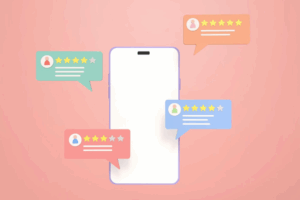Introduction
In today’s dynamic business landscape, sustainable growth has become paramount for long-term success. Companies prioritizing resilience and positive impact are better positioned to thrive in competitive markets. At the same time, traditional growth strategies focused on expansion and short-term profits fall short of addressing modern challenges. This article explores unconventional strategies for sustainable business growth, emphasizing value creation, innovation, and customer-centric approaches.
We’ll examine how businesses can rethink their growth mindset, implement customer-centric innovation, leverage community collaboration, align with purpose-driven missions, optimize resources, and prioritize delivery excellence. By adopting these strategies, companies can build a foundation for sustainable growth that benefits their bottom line while contributing positively to society and the environment. Establishing reliable and efficient delivery times emerges as a key factor in enhancing customer satisfaction and fostering loyalty within this framework.
Rethinking the Growth Mindset
The traditional “bigger is better” mentality that has long dominated business growth strategies is undergoing a significant shift. Forward-thinking companies are now focusing on value creation and impact rather than sheer size or market dominance. This paradigm shift requires deeply understanding a company’s unique value proposition and aligning growth initiatives with core competencies and values.
One emerging concept in this new growth mindset is “circular growth.” This approach maximizes resource utilization while minimizing waste, creating a sustainable cycle of development and innovation. By adopting circular growth principles, businesses can reduce their environmental footprint, optimize operational efficiency, and discover new avenues for expansion.
To embrace this new growth mindset, companies must:
- Identify and articulate their unique value proposition
- Align growth initiatives with core competencies and values
- Implement circular growth principles in operations and strategy
- Focus on creating long-term value for stakeholders, including customers, employees, and communities
For instance, engaging with an IT consulting professional can support businesses in aligning technology strategies with your growth initiatives, ensuring your operations are efficient and future-proof. By rethinking the growth mindset, businesses can develop a more sustainable and resilient foundation for future success.
Unconventional Strategies in Action
A. Customer-Centric Innovation
In pursuing sustainable growth, customer-centric innovation has emerged as a powerful strategy. This approach places the customer at the heart of the innovation process, leveraging user experience design (UX) and co-creation to develop solutions that truly resonate with target audiences.
Companies implementing customer-centric innovation often employ the following tactics:
- Customer feedback loops: Establishing channels for continuous customer input and using this data to inform product development and improvement.
- Crowdsourcing ideas: Engaging customers in ideation processes through platforms that allow them to submit and vote on new product concepts or features.
- Gamified experiences: Incorporating game-like elements into products or services to enhance user engagement and gather valuable insights on customer preferences and behaviors.
Example: A software company implements a customer feedback portal where users can suggest new features and vote on proposals. This direct line of communication helps the company prioritize development efforts and ensures that new releases align with customer needs.
B. Community & Collaboration
Harnessing the power of community and collaboration can drive sustainable growth by expanding resources, knowledge, and market reach. This strategy involves forming partnerships, strategic alliances, and leveraging networks to create mutually beneficial relationships.
Key aspects of this approach include:
- Co-working spaces: Sharing physical workspace with other businesses to reduce overhead costs and foster a collaborative environment.
- Joint ventures: Partnering with complementary businesses to combine strengths and enter new markets.
- Industry collaborations: Pooling resources and expertise to tackle common challenges or pursue shared opportunities.
Example: A small sustainable fashion brand partners with a larger retailer to gain access to a wider customer base while providing the retailer with eco-friendly product options. This collaboration allows both companies to grow their market share and enhance their sustainability credentials.
C. The Power of Purpose
Aligning business goals with a social or environmental mission can drive sustainable growth by attracting like-minded customers, employees, and investors. Purpose-driven companies often experience increased brand loyalty and positive word-of-mouth marketing.
Strategies for leveraging the power of purpose include:
- Becoming a benefit corporation: Legally committing to consider the impact of business decisions on stakeholders beyond shareholders.
- Implementing social impact initiatives: Developing programs that address societal challenges while aligning with the company’s core competencies.
- Building a strong brand story: Crafting a compelling narrative around the company’s purpose and values to resonate with customers and stakeholders.
- Professional email signature: Create a custom email signature with links to your website and social media pages to enhancing branding and drive traffic to your website
Example: A outdoor gear company commits to using only recycled materials in its products and donates a percentage of profits to environmental conservation efforts. This purpose-driven approach attracts environmentally conscious consumers and strengthens brand loyalty.
D. Resource Optimization
Adopting a circular economy approach to resource management can lead to sustainable growth by reducing costs, minimizing waste, and uncovering new revenue streams. This strategy focuses on maximizing the value extracted from resources throughout their lifecycle.
Key elements of resource optimization include:
- Upcycling: Transforming waste materials or by-products into new, higher-value products.
- Using recycled materials: Incorporating recycled content into products to reduce reliance on virgin resources.
- Implementing lean manufacturing processes: Streamlining production to minimize waste and improve efficiency.
Example: A furniture manufacturer implements a take-back program for used products, refurbishing and reselling them as a lower-cost option. This approach reduces waste, creates a new revenue stream, and appeals to environmentally conscious consumers.
E. Prioritizing Delivery Excellence
Establishing reliable and efficient delivery times is crucial for sustainable business growth. This strategy focuses on optimizing logistics, inventory management, and customer communication throughout the delivery process.
Key aspects of prioritizing delivery excellence include:
- Implementing transparent tracking systems: Providing real-time updates on order status and delivery progress to enhance customer trust and satisfaction. This includes offering express delivery tracking for time-sensitive shipments.
- Offering flexible delivery options: Allowing customers to choose from various delivery methods and timeframes to meet their specific needs, from standard shipping to expedited services.
- Partnering with reliable delivery providers: Collaborating with logistics companies that share a commitment to efficiency and customer service, ensuring consistent performance across all shipping methods.
Example: An e-commerce company implements a sophisticated order tracking system that provides customers with real-time updates via email and SMS, including detailed express delivery tracking for urgent orders. This transparency reduces customer anxiety and support inquiries, leading to higher satisfaction rates and repeat purchases. The system’s ability to provide accurate, up-to-the-minute information for both standard and express shipments has significantly improved the company’s reputation for reliable delivery.
Implementing Unconventional Strategies
Implementing unconventional strategies for sustainable growth requires businesses to foster a culture of innovation and critical thinking. This involves encouraging employees to question the status quo, creating space for experimentation, and embracing calculated risks. For instance, a manufacturing company might implement a quarterly “innovation challenge” where cross-functional teams propose and prototype new ideas, leading to breakthrough innovations that drive sustainable growth.
Investing in people is crucial for successful implementation of these strategies. Companies should focus on continuous learning, fostering employee engagement, and building diverse teams that bring varied perspectives to problem-solving. A technology company, for example, could implement a “learning sabbatical” program, allowing employees to pursue new skills or certifications, resulting in increased innovation and job satisfaction.
To ensure that unconventional strategies are truly driving sustainable growth, businesses must expand their metrics beyond traditional financial indicators. This involves setting holistic goals encompassing financial, social, and environmental impacts, tracking sustainability metrics, and assessing stakeholder impact. A consumer goods company might implement a balanced scorecard that includes metrics on employee well-being, customer satisfaction, and environmental impact alongside financial performance, ensuring that growth initiatives align with comprehensive sustainability goals.
Conclusion
In an increasingly complex and interconnected world, adopting unconventional strategies for sustainable growth is crucial. Companies can build resilient business models by rethinking traditional mindsets, embracing customer-centric innovation, leveraging collaboration, aligning with purpose-driven missions, optimizing resources, and prioritizing delivery excellence. These strategies offer a roadmap for sustainable growth and positive impact, from implementing feedback loops to establishing reliable delivery systems. As businesses move forward, challenging assumptions, investing in people, and measuring success holistically will create a virtuous cycle of innovation and efficiency. The time for action is now, and we urge companies of all sizes to explore these approaches, not only to secure their own success but also to address global challenges and create a more sustainable world for future generations.






